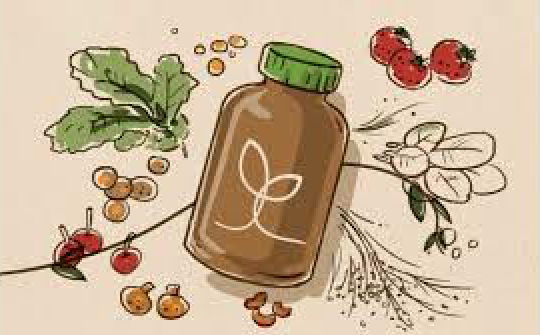
Submitted questions will be posted with my response by the following Tuesday or before.
Submitted comments will be moderated and approved within 24 hours.
Wool for Building Insulation

Question from Joanna
Hi Debra,
I’m building an addition to my home and I’m looking for the safest insulation.
I found this insulation that is basically sheep’s wool.
What do you think of this?
Debra’s Answer
I love it!
I love wool anything.
About twenty years ago I was remodeling the kitchen of my little-cabi- in-the-woods in Northern California and when I pulled the interior walls off, it was full of newspaper from 1930!
I needed something for insulation and I thought of sheep’s wool.
I just drove up to Shepherd’s Dream (which at the time was about an hour’s drive north of where I lived) and got the same organic wool that was stuffed in my mattress. It was perfect. And it just felt good to know I had wool in my walls. Like my house was cuddling me and keeping me warm.
This wool insulation looks fine to me. I’ve seen some others that mix wool with various other materials but Havelock Wool is 100% wool (with a small amount of natural boric acid added as an insect repellant). Their wool is sourced in New Zealand where sheep roam pastoral lands and eat grass in serene settings. It is blended and washed there before being shipped to their manufacturing facility in Nevada where they make both loose-fill and batt form insulation.
Here are some of the benefits they list on their website:
- ALL NATURAL – Wool insulation is entirely renewable and sustainable
- MOISTURE CONTROL – Wool naturally manages moisture levels against 65% relative humidity
- FIRE RESISTANT – Wool is inherently known to extinguish after smoldering
- LONG LASTING – Extensive useful life
- NO HARMFUL CHEMICALS – Natural characteristics allow our insulation to be devoid of harmful chemicals
- NOISE REDUCTION – Wool creates acoustic advantages in minimizing airborne sound
- DISPOSAL – Wool insulation can be composted at the end of an extended useful life
- INSTALLATION – Blow-in and batts are installed like other mediums but with no protection required
I’m happy to see this product available. It’s a totally natural, renewable biodegradable alternative to toxic insulation materials.
Safe Shoes for Children

Soft Star Shoes
Question from Amie
Hi Debra,
I found out my 3 year old daughter is allergic to carba mix, supposedly this is not in latex according to her dermatologist although I’m not so sure. It’s so difficult to find her shoes and it breaks my heart.
Mini Melissas are made out of PVC and I’m hoping that it’s a good option for her. Otherwise I have no idea what she can wear.
Is PVC OK?
Debra’s Answer
First, for anyone reading who does not know what “carba mix” is, It’s a mix of chemicals are used as fungicides and pesticides and also in the manufacture of many rubber products. The mixture is used for allergy testing. More info on carba mix, read this.
Here’s the short answer of why PVC is not a good choice. PVC is made from a chemical called vinyl monomer which causes cancer. To make it soft there are phthalates added. Six pthalates have been banned for use in a list of children’s products (children’s shoes are NOT on the list*). Lead is also added as a stabilizer.
So while your daughter may be allergic to these pesticides and fungicides, PVC shoes can cause cancer. To me that’s not a better choice.
Shoes are one of the products that are most toxic and most difficult to find alternatives for.
Here are some of the least toxic shoes for babies and kids I’ve found. You’ll need to check with each about the carbs mix specifically.
I’ve created a new category on Debra’s List for Babies & Kids Shoes. Take a look.
Lead in Ceramic Tile
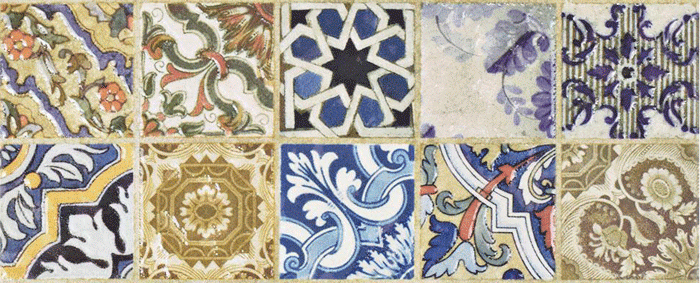
I’m posting this long correspondence because it has many links from this reader about lead in ceramic tile and various concerns.
The bottom line is: there seems to be a lot of lead in virtually all ceramic tile. It may pose a dust hazard when cutting, but is not a toxic exposure when touched or mounted on the wall. It does not emit lead into the air.
Question from Victoria
Hi Debra,
Hoping you can help us!
We have a question regarding ceramic versus marble tile. Hoping you can provide us with your thoughts!
My husband and I are planning on installing our kitchen backsplash this weekend.
We were hoping to choose plain white, made-in-the-USA 3×6 subway tile:
www.homedepot.ca/en/home/p.finesse-3-inch-x-6-inch-ceramic-modular-wall-tile-in-white.1000662664.html
We had specifically chosen the manufacturer Daltile based on their “Lead free certification” letter from 2013 found on their website: www.daltile.com/upload/greenworks/Lead-Free_Certification_2013.pdf
We have a lot of backsplash to install, from countertop to ceiling. The area around two large corner windows will require a SIGNIFICANT amount of cutting the tile to size, so we are very concerned about tile dust/debris generated while cutting the tile.
We felt confident choosing Daltile because they claim to not add any lead to their tile. Although they advise, by nature, there may be trace amounts. This “lead-free” claim is important to us as we have a toddler and we are currently trying to get pregnant.
However, upon further research, we came across a 2015 article from the Envionmental Information Association regarding problems associated with lead-testing ceramic tiles. Therefore they conclude it reasonable to assume all ceramic tiles have high levels of lead, if they are to be disturbed/cut. www.eia-usa.org/images/downloads/Newsletters/may15newsletter.pdf
In addition, Lead Safe America foundation advises to avoid choosing man-made ceramic tile. http://leadsafeamerica.org/tile
We are now concerned about using ceramic tile and are leaning towards using marble tile. We cannot seem to find any info online regarding lead/heavy metals/contaminants, etc in marble tile (although surely there must be at least trace amounts?..)
Do you know if marble would be a better, safer choice? Especially when having to cut and install significant quantities of tile?
Or would the subway tile in question be just as safe? We really want to pick the safest option for our toddler.
Please let us know your thoughts!
Thank you kindly for you help! 🙂
Debra’s Answer
Here are my thoughts.
First we live in a world where nothing is 100% without some toxic element. So it’s like fire or crossing the street. We do things to minimize risk.
In the past I and many others have considered manmade ceramic tile “safe” because it doesn’t outgas anything. Now that we are also considering heavy metal exposure we find that ceramic tile MAY contain lead.
So if Daltile says they do not add lead, then the only lead in that tile is whatever lead is occurring in the raw materials. Lead is an element of the earth. It cannot be eliminated 100%. So our challenge is to eliminate ADDED lead.
The Lead Safe America post seems to me to be saying that the biggest concern is from demolition and cutting, NOT from having the tile on a backsplash.
This tile will NOT emit lead into the room.
So it would be fine to install on a backsplash. I would CUT it outdoors. You don’t want to create dust from cutting indoors.
Note that her recommendations say don’t put food on the tile (which would absorb into the food and then you would eat it), use plates, etc, but she does NOT say do not touch the tile. Skin contact apparently is not a problem. I’ve seen this from other sources as well. So it’s OK to touch the tile.
Just as an aside, my whole kitchen and bathroom has this tile up all the walls 8 feet.
The conclusion seems to be that we should assume all manmade tiles contain lead. But as I outlined above, just because they contain lead doesn’t mean they cannot be used safely.
Marble is a natural material. It is not manufactured. Therefore lead would not be added, but it would contain any trace amounts of lead that occur naturally.
I would pick either and cut it in an area away from your toddler, where the dust would not go throughout the house via your HVAC.
Victoria’s Reply
Hi Debra,
Thank you so much for your reply! Your information and advice is greatly appreciated!!!
My concern is not the tile itself, but of the dust/debris generated when cutting large amounts of tile.
My hubby will cut the tile in the backyard, but even then, I worry about the tile debris/dust accumulating, possibly even contaminating, the deck, the playsets, the grass and soil my toddler plays in. Not to mention hubby’s clothing, dog paws, wind, etc, dragging it inside. I understand it doesn’t take very much lead to dust to contaminate an area.
This construction forum thread regarding lead in tile provided some interesting info:
http://forums.jlconline.com/forums/forum/jlc-online-expert-forums/ceramic-tile/52025-lead-in-tile
“One contractor I followed actually ripped out old tile that didn’t have lead in them and installed tiles that did have lead in them.
I checked where he dump the water from the tile saw and the soil was way over the clearance levels for lead content.
Dry cutting with a grinder produced the same results.”
The same forum thread mentioned an amazing field report that provided a lot of interesting information
http://ctioa.org/wp-content/uploads/2016/10/fr79.pdf
“The tile installer needs to take precautions to avoid the toxic effects of the lead and he needs to be sure that he does not carry tile dust home on his clothes or in his truck. Bob Knowles, a professional lead risk assessor, made the importance of this clear to me. On several occasions, the New Mexico Health Department asked him to trace down the source of lead that was causing elevated levels of blood to show up in school children. In some of these cases, he verified that the lead was coming from the professional activities of these children’s parent or parents who were tile installers. The tile dust was in their pick-up trucks and it was on the clothes, which they were wearing home. The pick-up trucks were used as work vehicles and for family transportation.”
Although Daltile provides a 2013 letter on their website that advises that they do not add lead to their glaze, I am still somewhat concerned about cutting and installing ceramic tile because they advise the tile may still contain lead. Im not concerned about the tile once it is installed.
So I was thinking maybe it’s best we cut and install marble instead of ceramic tile, just for peace of mind, because I can’t seem to find anything online that mentions lead in marble as a concern (unlike ceramic tile)
I would not be concerned about lead dust from tile cutting and installation if we didn’t have a toddler/still breastfeeding/potential pregnancy, as you know the effects of lead exposure are scarily irreversible, and even low levels of lead in the young body have been shown to affect IQ. Terrifying! 🙁
Although as you mention we live in a world where nothing is 100% without some toxic element… I just wish we lived in a world where us humans were more responsible about minimizing risk and took more care to ensure not only our safety, but the safety of the next generation(s) *sigh*!
That’s why I’m so appreciative of your website, blog and the work that you do, spreading important information and knowledge to everyone. Thanks so much for doing the amazing work that you do!! 🙂
Kind regards,
Victoria & family
Debra’s Answer
Considering all of the above and your concerns, I agree that your best choice is marble.
Air Pollution May be Harmful Even at Levels Considered “Safe”
 Live interactive map shows real time air pollution worldwide
Live interactive map shows real time air pollution worldwide
A new study from Harvard University suggests that air pollution continues to contribute to premature death of Americans—even at levels well below the legal limits set by the U.S. Environmental Protection Agency.
The nationwide study showed long-term exposure to two main smog pollutants—ozone and fine particulate matter—could increase chances of a shorter life.
The analysis of more than 60 million senior citizens found no sign of a “safe” level of pollution, below which the risk of dying early tapered off.
The Clean Air Act requires federal limits on the nation’s most widespread air pollutants to be updated periodically based on scientific review. The study, however, finds the current regulations to be insufficient to fully protect the public.
LOS ANGELES TIMES: Air pollution exposure may hasten death, even at levels deemed ‘safe,’ study says

Popsicle Molds
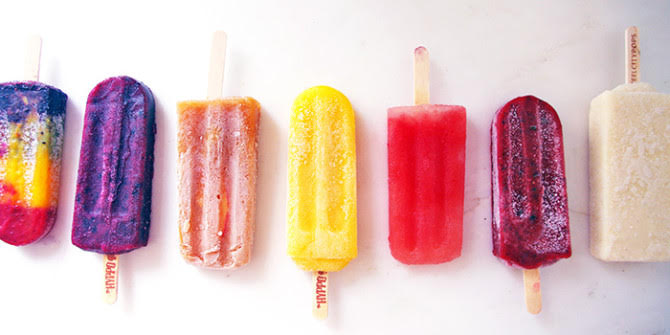
Question from MJ
Hi Debra,
I’m so glad I came across this! I’m trying to make our kitchen the healthiest I can as now I have a daughter! She’s extremely picky and I wanted to make some homemade popsicles for her to squeeze some veggies and fruit into her diet.
I can only find plastic (not buying), silicone, and stainless steel (18/8) molds.
Do you have a suggestion for me?
Also, what kind of cookware is best? Currently we have stuff I’m phasing out and also cast iron.
Debra’s Answer
For cookware, see Cookware page on Debra’s List.
First I want to say “good for you to make your own popsicles.” Even whole fruit popsicles in the natural food store often have sugar or other processed sweeteners in them.
For popsicle molds…now here is an example of a place where I would think more simply. I don’t make popsicles any more, though I love them.
The basic materials for popsicle molds to choose from are:
* plastic
* BPA-free plastic
* silicone
* aluminum
* stainless steel
The simplest way to make a popsicle is with paper cups. But here are 5 Ways to Make Popsicles Without a Mold.
Paper cups have a bit of paraffin wax on the inside, but you could line them with parchment paper, which has a silicone coating.
You know I think it would be great if someone would make wooden popsicle molds that you could line with parchment. I’m going to ask Larry to make a popsicle mold for me.
My popsicle alternative is to make whole fruit ice. Here’s a recipe I just made last night.
What’s different about this is it contains the whole fruit with the pulp, not just the juice. Which is not only better for you nutritionally, but it makes the ice creamier.
PINEAPPLE LIME WHOLE FRUIT ICE (GRANITA)
2 cups pineapple, cut into cubes
juice and zest of 2 limes
1 tablespoon raw honey
1/2 cup water
1. Put all ingredients into a food processor and blend until smooth. This took me about a minute.
2. Pour the puree into a shallow glass container, like a 9×9 glass baking pan.
3. Put it in the freezer and freeze for 30 minutes.
4. Take it out of the freezer and break up the ice with a fork. It will be frozen around the edges but not in the middle.
5. Let it sit for another half hour, break it up again, and it’s ready to eat.
This will taste like a popsicle and be cold like a popsicle, but no molds required. Larry and I both loved it.
You can use this same recipe with any fruit or combination of fruits or put it in a popsicle mold if you choose.
Tea Ball

Question from Judy
Hi Debra,
Looking for a non metal, non plastic tea ball. Ever run across this?
Thanks. 🙂
Debra’s Answer
First thing I thought of was a tea pot with glass infuser. Type “teapot with glass infuser” into google to see. Also ‘tea cup with glass infuser.”
Readers, how do you make your tea?
I have one of these teapots, but most of the time I just throw the loose tea into the Xtrema Tea Pot I boiled the water in, and then strain it out into the cup. Usually I make iced tea, living here in Florida, so then I let the tea cool in the pot and then strain it into a glass pitcher that I keep in the refrigerator.
More on Toxic Air In Airplanes

This is from an email sent from GreenMedInfo.
There has been a flurry of global reporting on new research from Stirling University hosted on the WHO’s website that confirms there is a clear pattern of and chronic symptoms ranging from breathing and vision problems, to neurological ones like headaches and dizziness in those exposed to the air blown from engines into aircraft cabins.
The Daily Mail, reporting on the new study recently stated:
‘There is a clear cause-and-effect relationship linking health effects to a design feature that allows the aircraft air supply to become contaminated by engine oils and other fluids in normal flight.
‘This is a clear occupational and public health issue with direct flight-safety consequences.’
The Telegraph’s headline is even more to the point: “New health concerns – and cancer link – over toxic cabin air breathed by 3.5 billion passengers each year”
If you or anyone you know flies, nothing is more important than to what you are being exposed to, and what you can do about it. I am convinced that consumer pressure on the industry will be the critical factor in reforming the industry, and not top-down political pressure by lawmakers, which will come only much later.
The first positive sign is that Boeing has already developed a non-toxic alternative called the 787 Dreamliner which is the only plane that takes fresh air from outside instead of directly from compressors in the jet engines to supply the cabin. Unfortunately, at this time, it is only rarely used for domestic flights. But consumer education and subsequent demand can quickly correct that problem!
Is There Lead in this Cookware?
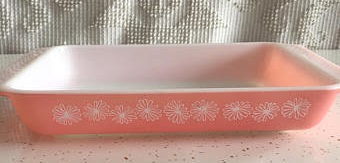
Question from Deb
Hi Debra,
I read your Bergstrom radio transcripts and appreciated them.
I live in Canada and with the money exchange, buying US cookware is not an option for me at this time, but after cancer, I would like to avoid using my metal pans as much as possible.
I do have some Corning Ware in my cupboards; two small dishes marked “For range and microwave,” two “Symphony (1990-94) patterns, a French white baking dish, and a white Pyrex dish—with little pink flowers on the outside—that is marked “England” on the bottom. I admit I don’t comprehend real well and I’m still not clear on whether any of these dishes contains lead. I doubt I can cook in any of them except the first two marked as such.
Can you give me the short answer?
I’ve been reading a lot of your blog and am beginning to trust your food safety info above all others.
Debra’s Answer
The quick answer is to test.
The least expensive way to test is with Lead Check strips. A negative reading doesn’t guarantee there is no lead, but a positive reading would tell you there IS lead.
Anything to Watch Out For When Buying a Corded Phone?
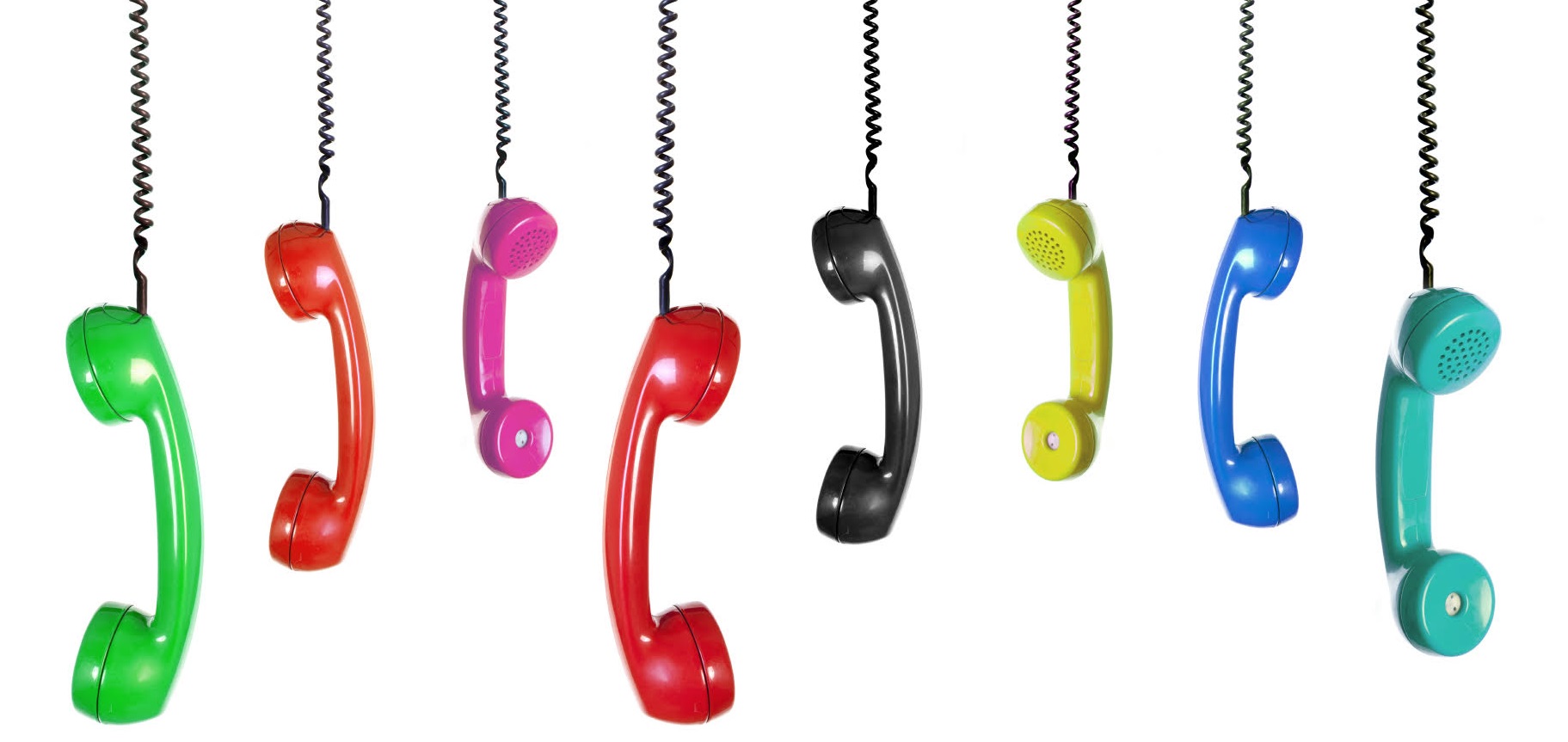
Question from Cheryl
Hi Debra,
Regarding Corded phones—are they all pretty safe?
We’re eyeing one with digital LCD display of incoming calls etc. and speaker phone here is the link.
AT&T – 2940 Corded Phone with Caller ID/Call Waiting – Black
I noticed even some corded phones mention having DECT technology which I believe is bad.
This one does not say it has DECTso I assume it doesn’t have it since most corded don’t seem to mention DECT.
Is there anything I need to watch out for when buying a corded phone w/LCD display and speakerphone?
Thank you.
Debra’s Answer
I searched for a corded phone with DECT and the only models that came up were combination phones that have corded and cordless together in one phone base.
I’ve been purchasing corded phones and I usually purchase a phone similar to the one you are looking at.
Readers, any problems buying corded phones?
GMO Ingredients in Supplements
You may be aware of fresh foods that are modified with GMOs and you may know that many additives in food products are modified with GMOs, but did you know that dietary supplements also can contain ingredients that are modified with GMOs?
Here is an excellent article that outlines where GMOs might be hidden in your supplements.
TOUCHSTONE ESSENTIALS: Are Your Supplements Tainted with GMOs?
The GMO-Free Supplements I Take Every Day
I’ve been taking Touchstone Essential whole food supplements every day for about five years.
They are the best supplements I’ve found. Made from whole organic foods grown on their own farms, no GMOs, processed at low temperatures. Glass bottles.
Learn more about Touchstone Essentials supplements here
